If the gardening bug has bitten, sooner or later you’re going to want to start some plants from seed.
Vegetable starts, bedding plants, perennials, and even some trees and shrubs (for the patient) can be grown from seed. When you’re ready to graduate from the sunny windowsill to a real propagation station, here’s a seed-starting rack you can make at home for much less than what a ready-made one would cost.
These racks hold four flats. I’ve chosen to use 72-cell trays, which means that with 100% germination (ha), I could have 288 plants here!
I got the shelves on probably only my second visit ever to Walmart. I normally wouldn’t go there, but these were only 15 bucks each (there are two of them that I fastened together with zip ties), and as you can see, I was able to snuggle in two shop lights and four seed trays perfectly. There is one more tier included, but I thought that adding it would make the station too tippy, and I didn’t need two more trays anyway.
If I had been more patient, I could have waited for a cheaper, used, and probably more sturdy set of shelves to pop up on craigslist. And if I were more handy, I could have built my station from scrap lumber. But I’m pretty happy with what I created.
I used zip ties to fasten the shop lights to the shelves. I started the holes by screwing in a sharp screw, then took it out and worked a screwdriver into the hole to widen it and make a neat circle. I looped the zip tie through the holes and through the first link of the chain on the shop light. On the lower shelf, I fastened it underneath, so that the end wasn’t sticking up like it is on this top shelf.
You don’t need fancy grow lights. Ordinary fluorescent lights work just fine for most purposes.
You will probably want to keep the trays only a few inches away from the lights at first. If the light source is too far away, the seedlings may stretch, like this money plant (Lunaria annua) did.
You can either lower the lights to suit the plants, or raise the plants to the light source. With this station, it only makes sense to raise the plants to the light. (No, you don’t have to use raisin bran boxes when you’re “raisin'” the plants. Sorry.)
If you’re growing several different varieties of plants, one thing to keep in mind, though, is that your seedlings may emerge and grow at different rates, and if they’re all in one connected tray, some plants may end up too close to the light and some may end up too far away.
These 6-packs are more mobile.
Use a soilless mix for starting seeds. Otherwise, damping off disease will run rampant. You’ll know it when you see the seedlings emerge, but then promptly keel over.
I bought a bale of peat moss and a big bag of vermiculite and one of perlite to make my own mix, which should last me forever. You can buy ready-made seed starting mixes in smaller quantities, though.
Either way, the key is learning the delicate dance between keeping the mix moist but not wet. This will only come from experience. Most beginners err on the side of too much moisture.
Once you do have seedlings up, snip out the extras in each cell, leaving only one. Be ruthless. And once they have a couple of true leaves (these Thermopsis carolina seedlings have only their two “seed leaves”), start fertilizing them with diluted liquid fertilizer.
Did I mention that recycled milk cartons make great plant tags?
Some perennial, tree, and shrub seeds need to go through a cold period of several weeks (this is called “stratification”) before they will germinate well. They can go through this naturally outside, or in your fridge. In each baggie I mixed the seed of one variety with sand and a few drops of water. Again–not too much moisture, or they will rot!
Some seeds are so gung ho after stratification that they will sprout right in the bag, like this rose campion (Lychnis coronaria) did.
Don’t you have that feeling, too, after a long winter?!

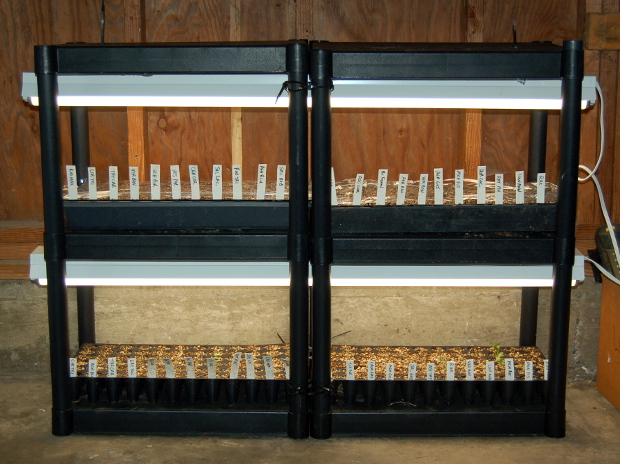


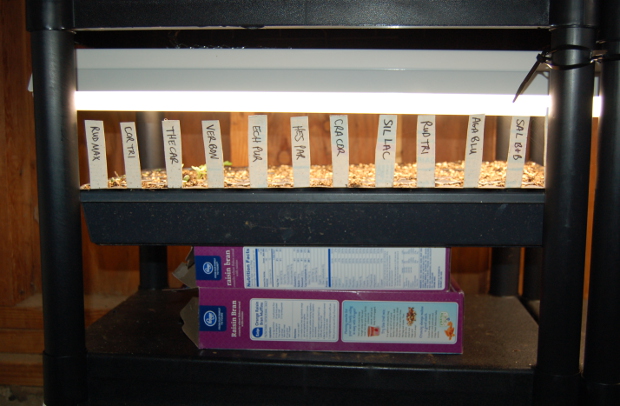
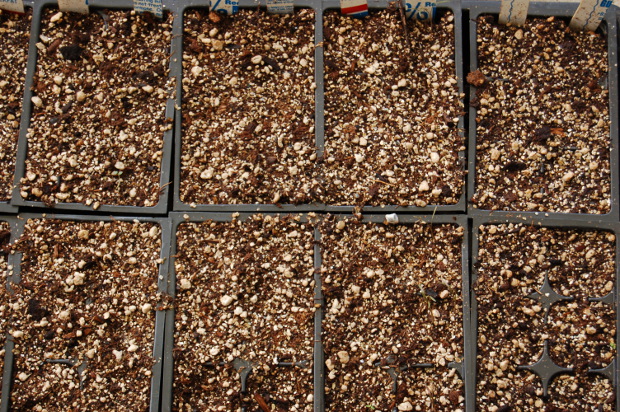
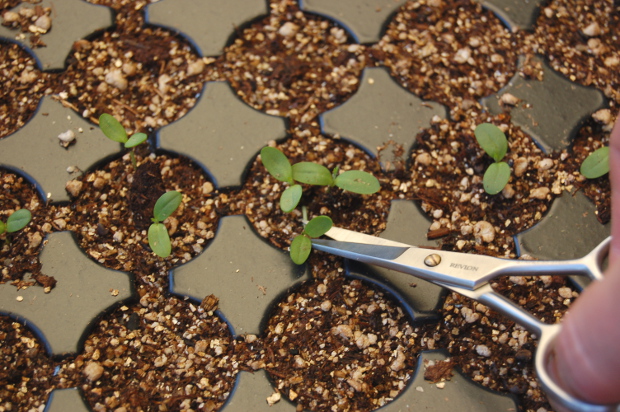
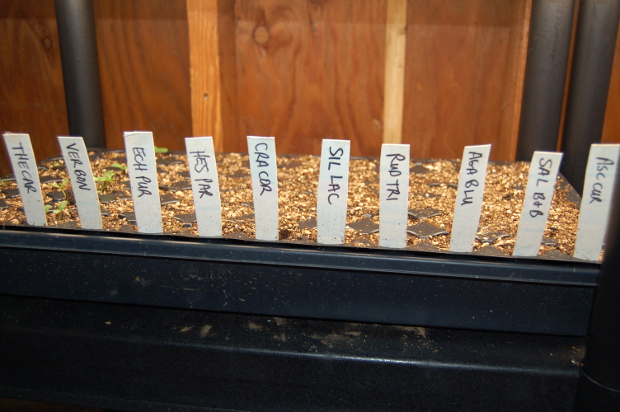
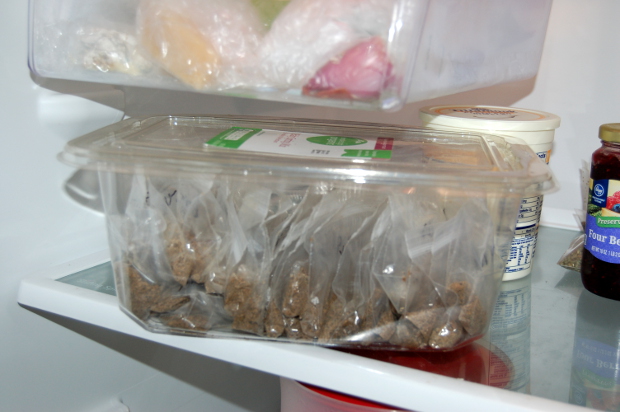
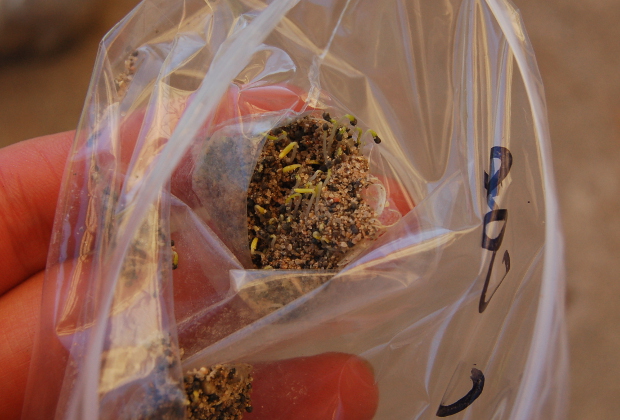

You’re going to have your garden up and away with all those plants! When will you plant them out ?
Linda, I know, right? I mostly just wanted to start propagating again, and experience that magic of seeing seeds sprout. I will probably end up giving some away–either for other plants, or for good karma.
Hello, I found your article on how to make your own seed-starting station really helpful..thanks, Richard